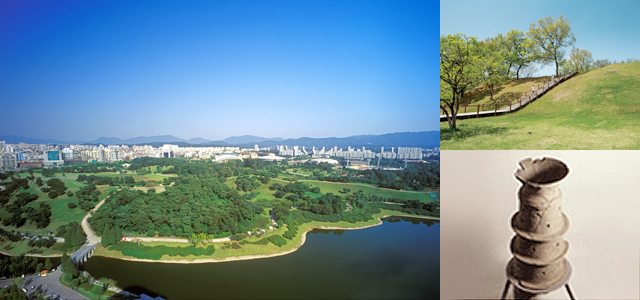Mongchon Toseong
- EraBaekje of the Three Kingdoms era
- StatusHistoric Site No. 297 (July 22, 1982)
- Location424, Olympic-ro, Songpa-gu
- Size
- Total area: 441,765 ㎡
- Transportation
- [Bus] 340 ,341, 361, 3312, 3214, 3411, 3412, 3413
- [Subway] Mongchontoseong Station on Line 8 or Hanseong Baekje Station on Line 9

Mongchon Toseong is an earthen wall built by heaping up layers of clayish soil and sand using a natural hill located to the south of Pungnap Toseong. The two fortresses form the boundaries of the royal capital of Hanseong Baekje.
Seongnaecheon Stream near the fortress originally served as a natural moat for the wall, before the current Mongchon moat was formed when Olympic Park was created, as the shape of the stream was changed due to urban development.
Following four surveys conducted by Seoul National University in the 1980s, the Seoul Baekje Museum has been investigating the wall since 2013. The researchers found well-developed roads showing the structure of the city and sites of houses and buildings inside the wall, along with many relics such as pottery produced in Baekje, including cylinder-shaped pottery stands, soft earthenware, and paddling pattern earthenware, and other relics suggestive of exchanges with China, including glazed pottery and golden accessories.
In the excavation surveys carried out so far, remains and relics of Goguryeo and Silla have also been discovered, which implies that the fortress was used for the purpose of defense by Goguryeo and Silla that took over the fortress after Baekje lost its territory in the Hangang River area to Goguryeo in the 5th century.
The relics excavated from the site of Mongchon Toseong are currently on display in Seoul National University Museum and Seoul (or Hanseong) Baekje Museum.